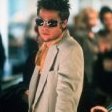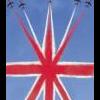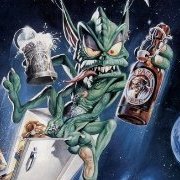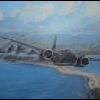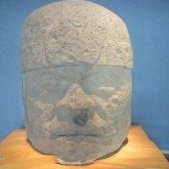-
Posts
630 -
Joined
-
Last visited
Profile Information
-
Gender
Male
-
Location
Aussie expat living in Thailand
-
Interests
Aircraft design
RAAF
Modelling 1/48 aircraft
Recent Profile Visitors
3,033 profile views
Magpie22's Achievements

Obsessed Member (4/9)
1.3k
Reputation
-
I have photos of Spitfires that had suffered accidents and had been left outside overnight, awaiting a recovery vehicle. They were fitted with cockpit and engine covers. I think it only reasonable to assume that serviceable aircraft left outside overnight would also have been so covered. I assume that the pitot/static head cover would also have been fitted. Peter M W3209, UD-L, No.452 Sqn, Kenley. BM243, BPE, No.457 Sqn, Kirton-in-Lindsey
-
As mentioned above, a few shots to show the difficulty of interpreting black and white photos. OK, they are of a P-40E and not a P-40C but, they are of the same colour scheme and taken within days of each other. All show Bobby Gibbes' ET953. The above two shots are part of a series taken by a professional photographer. He appears to have used panchromatic film but, has used a red/yellow filter to darken the blue and enhance the cloud scape, (and I suspect a polarizing filter to sharpen the image in the heat haze). Without the filter, the sky would have reproduced as a lighter tone and the clouds would have been almost invisible. The filter has had the side effect of darkening the blues in the roundel, codes and under surface colour. These two shots are of the same aircraft a short time later, taken by an amateur photographer. Once again it would appear that panchromatic film has been used but, this time without a filter. The sky is much lighter and the clouds are barely visible. The blue in the roundel is not as intense a dark tone and, the blue in the codes and the under surfaces registers as a much lighter tone than in the two shots at the top. My interpretation is that ET953 is in stock-standard Dark Earth / Middlestone / Azure Blue. What is yours? And a bit off topic, but also pertinent to colour interpretation from B/W film. Two shots of the same aircraft, taken minutes apart by same photographer, on same camera, same film but different filters. Peter M
-
My Hebrew speaking friend also tells me that it is probably meant to be Hepzibah, who was the wife of the Judean king, Heziah. She was of some note as she was adopted by the prophet Isaiah when he found her as an orphaned child. It is also used as a name for a girl child and means "the delightful one" or "my joy". As to the undersurface colour your guess is as good as mine. The various shades of Blue are almost impossible to interpret from black and white photos. You cannot rely on your eye's interpretation. Remember that the process of transferring different wavelengths of light to photographic film is a chemical process and is therefore subject to the type of film used. It bears little relationship to what our eyes tells us is reasonable. And the interpretation is further complicated by the use of filters to enhance or deduce certain wavelengths reaching the film. FWIW, I agree with Buzz. I think we can rely on the MU 'sticking to orders' and so re-painting the aircraft as ordained, i.e. Azure Blue under surfaces. As an aside, compare the shade of the undersurface colour with that of the sky in the background - quite similar. I have a number of photos of Bobby Gibbes' Kittyhawk I, ET953, in which the under surface tone ranges from a light tone right through to a dark tone, (often interpreted as being Dark Mediterranean Blue by experts). The shots were all taken within a relatively short time frame and the aircraft was not repainted while on unit strength, so they all depict the same colour scheme. I will dig them out and add them to this thread. Peter M
-
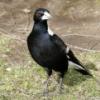
No. 450 Sqn. in Italy: what to use to soften up the ground?
Magpie22 replied to Ricky Fitz's topic in Aircraft WWII
Buz, photo of FR853 shows she was in 'temperate' scheme, not desert. Incidentally, she has one Brit 250 lb on centre-line station in that pic. Cheers, Peter M -
If you are going to all the trouble of adding those extras, you may want to correct the kit's main deficiency. The rear fuselage, in plan view is tapered all the way to the rudder, resulting in the latter and the fin being too thin. On the actual aircraft the fuselage extension to move the fin and rudder aft, on the 'long tails', was of parallel section in plan view. Thus the fin and rudder were basically the same as on earlier models. FR853 was not 'the one' with the boxing kangaroo emblem. There were several of No. 450 Sqn's A/C that carried the boxing kangaroo emblem. Be a bit careful in separating the various A/C when looking at those AWM photos. Peter M
-
In short, yes, the same Supermarine tropical filter housing could be fitted to the PR.Mk.IV as well as the Mk.V aircraft. Your main problem with using the Airfix, (or any other), Mk.VC will be replacement windscreen and canopy. Peter M
-
FINISHED - WELL ALMOST! Just got to add the fairing doors that normally fit over the wing lock releases, (deployed on my model), and some stencilling and tiny writtin.. If you spot anything else That I missed - I don't want to know!!
- 29 replies
-
- 2
-

-
- RAN
- Firefly TT
-
(and 1 more)
Tagged with:
-
A pity it won't be finished here, Colin. I look forward to seeing it in WIP. I, for one, can understand the outside pressures that can interfere with modelling time. I think I might just get my model in, 99% finished, by the deadline. I must admit I'm not a great fan of the Wessex. Got a few rides in them when we were doing work for the Navy - noisy, drafty, dusty beasts. However it beat the Scout, me sitting on the door sill, feet on the skid, relying on the safety harness, hanging onto the Hasselblad for dear life, and praying that I and/or the camera would not be taking a 100ft fall into the drink, as the pilot, without warning, executed a max rate turn to get back on deck before the Moresby sailed into a rain squall. Ah, the good life!! Peter M
-
Added a few more doodads and doodahs to the wing locking/retraction mechanism. Fitted the winch and target tow gear. I wanted the model to look as thought he A/C was ready to go on a TT sortie, not just show the main items, which were the winch and buffer strut provided in the kit. Added were view windows on the side of the winch, the electrical cable from the A/C to the winch, and the tow cable running from the winch to the buffer strut. Three rings were fitted around the rear tube of the buffer strut, with target lanyards running from them to the ejection chute, via the retainers on the fuselage underside. Finally, I added the 'fish', (target exchanger), to the rear of the buffer strut. Fairly happy with the end result. After I added the photos here, I noticed that 'clumsy fingers' had managed to bend one of the winch prop blades - fortunately easily fixed. Oh, and those two bloody big metal bars extending from the wing trailing edge are meant to be there. You see Captain Blackadder, I have a cunning plan. They will provide the main support for the folded wings. Let's hope my plan is more successful than Private Baldrick's plans!! Peter M
- 29 replies
-
- 3
-

-
- RAN
- Firefly TT
-
(and 1 more)
Tagged with:
-
Time to start decaling. First up, I extracted this diagram from the files. Helps no end with sizes and positioning, when used in conjunction with the photos I put up in an earlier post. All major markings have been applied, as well as the protective wire that runs around the rear fuselage and empennage. And, yes, the fuselage side number is in different positions on this aircraft. Next, I started to spray a clear top coat to protect the major marking decals while I added more detail to the wing fold. I had just about finished spraying when catastrophe hit! The pressure provided by my compressor dropped to 2 psi. Fortunately, I had covered most of the model by that time. I dismantled the compressor unit and eventually tracked down the culprit. Not as simple as a clogged regulator or leaking tube unfortunately. It turned out to be the diaphragm fitted to the piston. Unfixable, and probably unobtanium as a spare part. Also one of the problems faced by the 'long distance modeller' is the time taken to get kits, paints, parts etc - about 2-3 weeks minimum in this part of the world. So, it will be only be brush painting from now on, on this project. Next step is to make the hinge fittings, various locating pins and their sockets, the release mechanism, long range tank fuel pipes, air lines, armament control connectors, electrical connectors, etc etc. Peter M
- 29 replies
-
- 2
-

-

-
- RAN
- Firefly TT
-
(and 1 more)
Tagged with:
-
A bit more progress. The rudder and elevators have not been glued on, just hanging on their locating pins for the photo. Upper surfaces have been finished in aluminium paint. Prop and wheels assembled and painted. The mainwheels are resin from an old Cutting Edge set for the Tempest/Sea Fury - same wheels. The winch unit, and buffer strut, assembled and painted. The RAN winch units had inspection windows in the port side so I added these. The buffer strut was mounted to the fuselage as its mounting is quite solid but, I have not mounted the winch unit at this stage as as its mounting framework is a bit fragile and I reckoned it would not stand my clumsy hands for very long. Radar altimeter antennae, (courtesy RedRoo), were fitted under the tailplane . I made the protective guards for the elevators from wire. A similar guard for the tail wheel was also fitted under the fuselage. The fitting for the wire guard that runs around the fuselage, tailplane and fin was added to the top of the fin. The tailplane fittings for this guard are incorporated in the elevator protective guards mentioned above. The red, white and green dots visible behind and adjacent to the rear of the buffer strut are the guides for the target lanyards. These run out of, and forward from, the launching chute to the target exchanger, which will be fitted to the tow cable at the rear of the buffer strut. the colour coding was essential to ensure that the operator did not launch the tows in the wrong order.
- 29 replies
-
- 7
-

-

-
- RAN
- Firefly TT
-
(and 1 more)
Tagged with:
-

79 Squadron RAAF - White Leading Edges - Spitfire VIII
Magpie22 replied to Olmec Head's topic in Aircraft WWII
Yep, block tread was the most common up North. -

79 Squadron RAAF - White Leading Edges - Spitfire VIII
Magpie22 replied to Olmec Head's topic in Aircraft WWII
" I was searching some of Pete’s posts here as Troy posted but no luck. Maggie has all the info on this, but I haven’t seen any posts from him for a bit, so hopefully he is okay." No, he hasn't kicked the bucket yet. 😇 These shots should answer your question @Olmec Head. As you can see, curved on top, straight underneath. Oh, and please do not use a decal with the pink elephant. Norm was a teetotaller - the elephant was a reference to his build not his drinking habits. As he said to me, when describing the emblem colours, "grey, same as any other bloody elephant". Late in the war the white was badly eroded allowing the original yellow LE bands to show through. Note also the treaded tyres. Peter M- 18 replies
-
- 11
-

-

-




